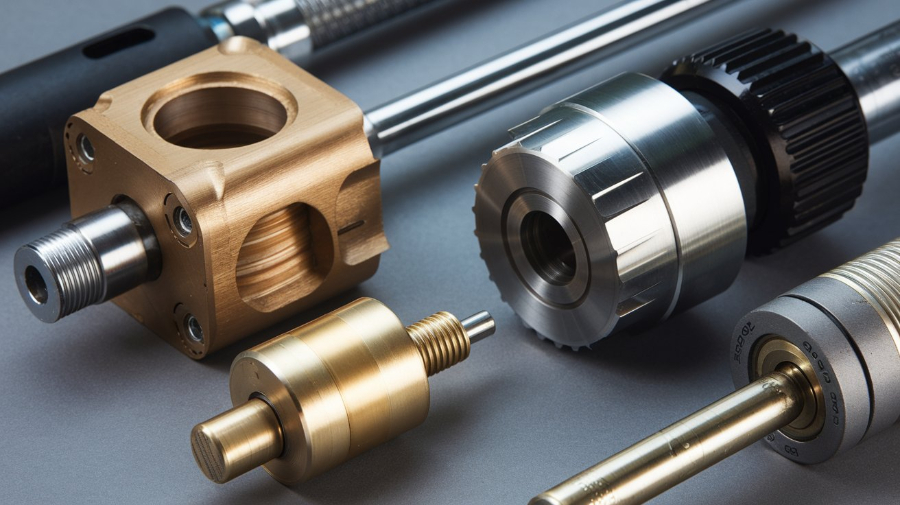The global Actuators Market is set to experience significant growth, projected to increase from USD 67.7 Billion in 2024 to USD 94.8 Billion by 2029, reflecting a compound annual growth rate (CAGR) of 7.0%. This surge is driven by rapid industrialization, urbanization, and a marked rise in automation across various industries. From automotive to food & beverages, oil & gas, robotics, and aerospace, actuators are integral in enhancing operational efficiency, safety, and precision.

Actuators Industry
Key Drivers of Market Growth
- Rapid Industrialization and Robotics Utilization: The demand for Actuators is significantly driven by the rise in industrial robotics. Manufacturers across sectors are constantly seeking ways to increase productivity and minimize downtime. Actuators, which enable precise control of machinery, play a critical role in industrial automation. Industrial robots, heavily reliant on actuators (electric, hydraulic, and pneumatic), perform intricate tasks with precision and speed. This reliance is leading to a higher demand for actuators as industries transition towards automation.
- Adoption of Automation Across Sectors: The growing adoption of automation in sectors such as automotive and manufacturing is a major growth driver for the actuator market. With industries moving towards more sophisticated automated processes, actuators enable precise control of movements, increasing efficiency and reducing the need for manual intervention.
- Cost Reduction in Robotics: The declining costs of robots, coupled with advancements in technology, have made automation more accessible to a broader range of industries. Lower-cost robots and production processes have opened the door to more widespread use of automation, further fueling the demand for actuators.
You Can Download Our PDF Brochure: https://www.marketsandmarkets.com/pdfdownloadNew.asp?id=59465451
Restraints on Market Growth
Low Oil Prices and Economic Slowdowns: The oil & gas industry is one of the largest consumers of actuators, especially in operations involving valves and drilling equipment. However, when oil prices decline, the industry’s capital expenditures (CapEx) tend to decrease, leading to reduced investments in new projects. This directly impacts the demand for actuators, especially in sectors reliant on the oil & gas industry.
Emerging Opportunities
Renewable Energy Investments: The growing investments in renewable energy offer significant opportunities for the actuator market. Power generation plants, particularly in sectors like solar energy, rely on actuators to monitor and adjust flow systems and optimize energy collection. With an increasing global focus on renewable energy sources, the demand for automation actuators in power stations and solar plants is expected to rise.
Challenges Facing the Actuator Market
Leakage Issues in Pneumatic and Hydraulic Actuators: Pneumatic and hydraulic actuators, while powerful, come with the challenge of leakage. Pneumatic actuators, which rely on compressed air, face maintenance challenges due to leaks in their systems. Similarly, hydraulic actuators, known for their ability to generate high force, can suffer from fluid leaks that not only compromise efficiency but also pose environmental risks. Addressing these leakage issues will be crucial for the sustained growth of the actuator market.
Actuators Market Ecosystem
The market’s key players include Rockwell Automation, Emerson Electric Co, Parker Hannifin Corporation, ABB Ltd, and SMC Corporation. These companies are focusing on innovations and contracts to stay ahead in the competitive landscape.
Market Segmentation
- Rotary Actuators: These actuators, widely used in automation applications, are gaining traction due to their ability to convert electrical energy into rotational motion. They are particularly useful in industries requiring precise positioning of end effectors, such as valves in pipelines.
- Hydraulic Actuators: Known for their ruggedness and ability to generate high force, hydraulic actuators are ideal for heavy-duty industrial applications. Despite their high maintenance requirements, they remain essential in industries where powerful actuation is required.
To Gain Deeper Insights Into This Dynamic Market, Speak to Our Analyst Here: https://www.marketsandmarkets.com/speaktoanalystNew.asp?id=59465451
Regional Analysis: Asia Pacific Leads the Way
The Asia Pacific region is expected to dominate the actuator market, driven by rapid industrialization and the presence of major actuator manufacturers. India, in particular, is projected to exhibit the highest growth rate due to technological advancements and increasing demand for actuators in the industrial sector.
Top Market Players
The market is dominated by a few globally Established Players such as:
- Rockwell Automation (US)
- Parker Hannifin Corporation (US)
- Emerson Electric Co (US)
- ABB Ltd (Switzerland)
- SMC Corporation (Japan)
These companies are focusing on innovation, contracts, and partnerships to strengthen their market presence.
Recent Developments in the Actuator Market
- June 2022: Emerson’s AVENTICS division launched a new series of electric actuators, offering precise and repeatable motion control. The SPRA series provides users with greater flexibility compared to standard electric actuators.
- October 2023: SMC Corporation introduced the LET-X11 Series of linear actuators, capable of handling impressive speeds and workloads, enhancing usability in various industrial applications.
The global actuators market is poised for robust growth, driven by the widespread adoption of automation, advancements in technology, and increasing investments in renewable energy. While challenges like leakage issues in pneumatic and hydraulic systems persist, the overall trajectory remains positive, with significant opportunities in sectors ranging from renewable energy to industrial automation.